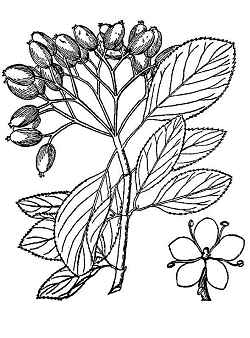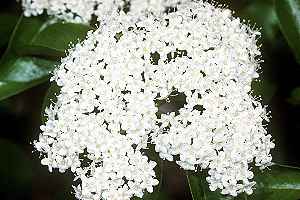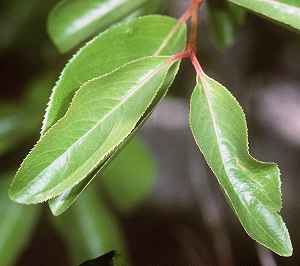
Viburnum prunifolium, Britton, N.L., and A. Brown. 1913. Illustrated flora of the northern states and Canada. Vol. 3: 273.
Sunset®: 1-9,14-21
USDA: 3-9
Sun Exposure: Full sun to light shade
Origin: Eastern and east-central North America
Growth Habits: Deciduous, large shrub or occasionally small tree, 12 to 15 feet tall (3.6-4.5 m), or more as a tree, 6 to 12 feet wide (1.8-3.6 m);dark brown, scaly bark; opposite, broadly elliptical, very finely serrate, dull green leaves, 1.4 to 3.6 inches long (3.5-9 cm), 1 to 2 inches wide (2.5-5 cm), reddish petiole without wavy margins
Flowers: White flowers
Watering Needs: Low to regular water use, drought tolerant
Propagation: Seed, cuttings, suckers

Prune after the blackhaw has finished blooming. Pruning in the fall will reduce the blossom the following year.

Blooming Habits:
Non fragrant, white flowers, up to 0.25 inch wide (6 mm), in flat topped clusters, 2 to 4 inches wide (5-10 cm), in spring (April to May).
Fruiting Habits:
Edible pink elliptical drupes, 0.25 inch long (6 mm), maturing to blue-black with a whitish bloom, in the fall (September to October).
Desert-Tropicals is dedicated to provide gardening advice, gardening ideas, and information about flower of all kind for landscape and collections.We try to check carefully the identification of the plants on the illustrations as well as the other information from the page, but occasionally errors do occur. if you notice anything that needs to be changed please contact us.Thanks.
© 1998-2020 Philippe Faucon, All Rights Reserved.